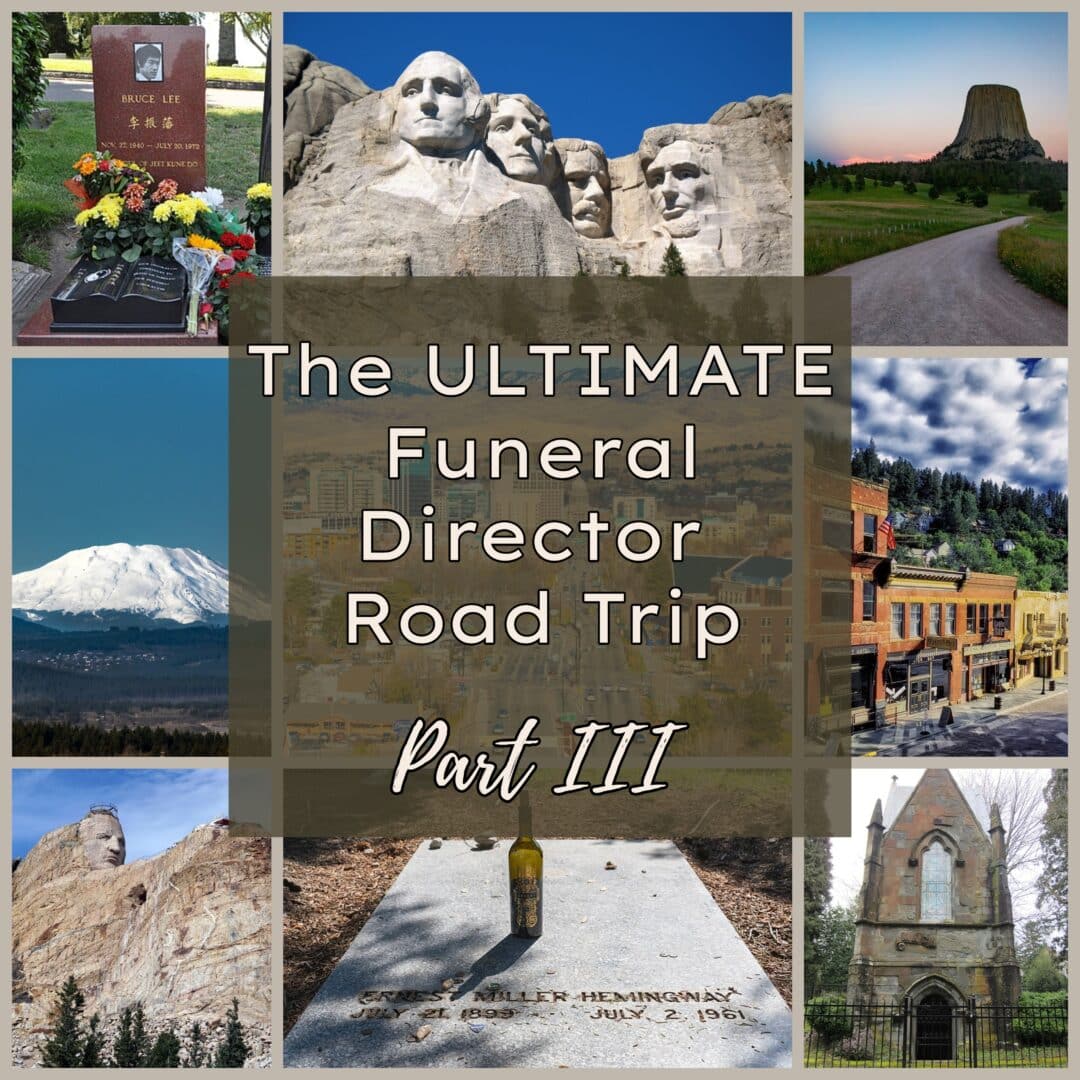
It has often been said that a person should take at least one great road trip during their lives to truly appreciate the vastness and diversity of the world around them. In a nation dotted with so many sites paying homage to the value of memorialization, a funeral director’s road trip offers a unique opportunity to delve into the rich history of mortuary customs, traditions and cultural expressions of remembrance.
Recently, ASD created a new funeral director’s road trip series on our blog, highlighting places where the solemn beauty of mortality intertwines with the richness of history and culture. We have dedicated considerable time researching destinations we believe will ignite inspiration among morticians in our effort to curate an itinerary that broadens the perspectives of folks in the deathcare profession.
In Part 1 of the series, we explored over two dozen sites from the Northeast to the Southwest, including stunning cemeteries, moving veteran memorials, civil war history sites, notable graves, and more. In Part 2, we focused on a journey from the southwest to the pacific northwest, exploring haunting ghost towns, ancient Native American ruins, historic homes, natural wonders, unique museums and more. Now, in the third part of our series we will take a look at interesting sites on the road between the Pacific Northwest and the Great Lakes region.
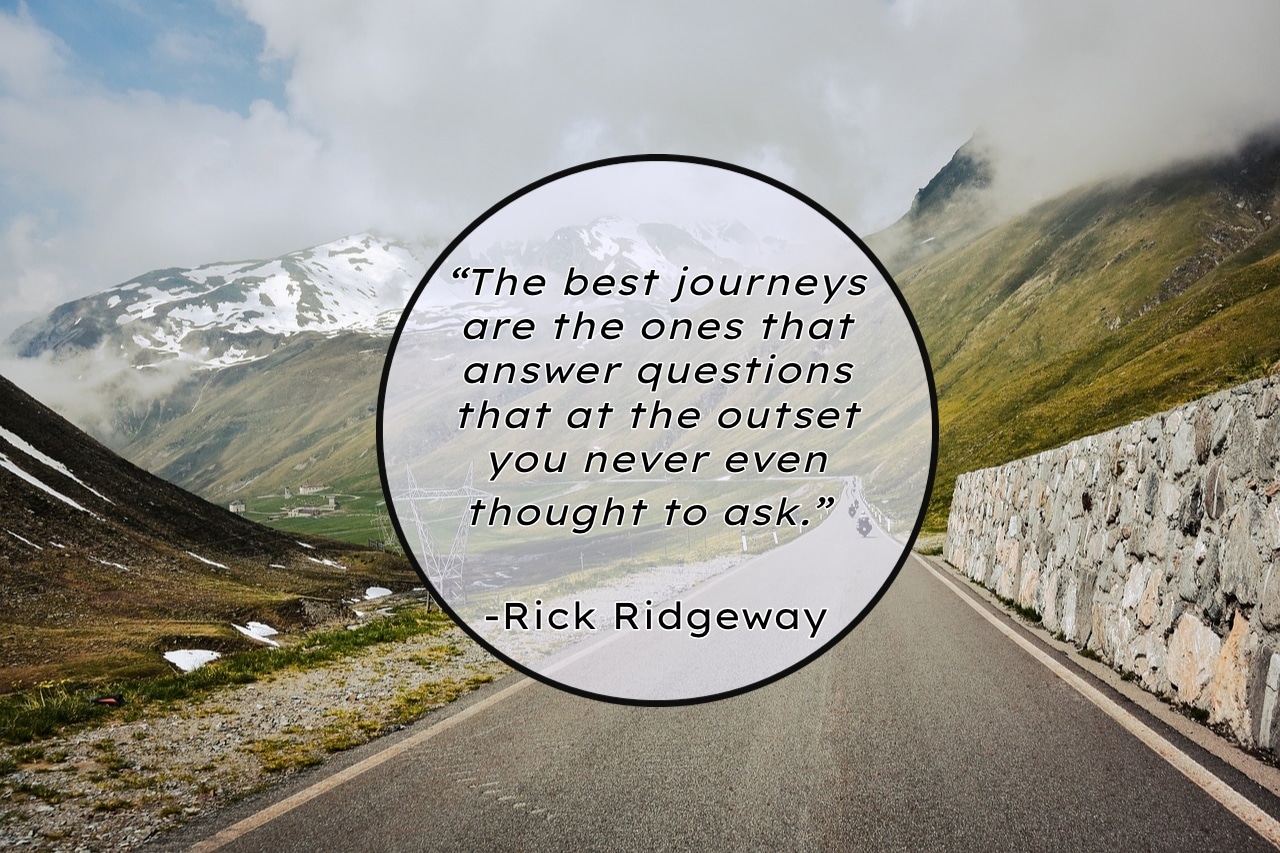
An Unforgettable Funeral Director’s Road Trip
Part III: West Coast to the Great Lakes
The third leg of our road trip begins in the northwestern corner of our great nation. Journeying from Washington to Minnesota, you’ll explore locations that allow you to retrace the steps of early pioneer settlers (albeit in the reverse direction). The trip begins and ends in two iconic American cemeteries. Traveling from the Pacific Northwest to the Great Lakes region, you’ll drive through six states, discovering famous gravesites, Oregon trail landmarks, collector oddities shops, national monuments, quirky roadside attractions, fascinating museums and more. With approximately 44 hours of driving time, you can complete the third portion of our funeral director’s road trip in about 9 days if driving 4-5 hours per day.
Be sure the check out the final part of our road trip series next month which will explore central America and the Mid-West.
Washington and Oregon
First stop: Lake View Cemetery in Seattle
Begin your road trip by paying tribute to a legend and taking in the picturesque beauty of Lake View Cemetery (1554 15th Ave, Seattle). Home to the graves of Bruce and Brandon Lee, Lake View is also the final resting place of several of Seattle’s earliest settlers. Situated atop a beautiful expanse on Capitol Hill, the scenic hillcrest property overlooks Lake Union and is considered by many to be one of the most beautiful cemeteries in America. If you plan to visit, we recommend taking a few moments to read this moving essay penned by a mother of a child who is buried there.
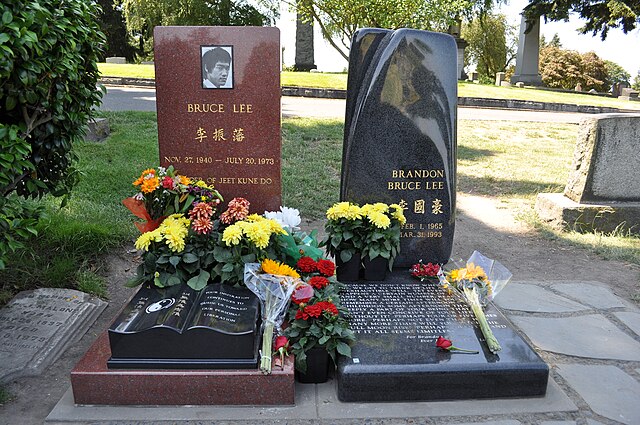
After strolling the grounds of Lake View, you can continue visiting sites that pay tribute to legends by stopping to sit at the famous Kurt Cobain benches at Viretta Park (151 Lake Washington Blvd). Located next to Cobain’s former home, it is believed the iconic Nirvana frontman often chose this scenic location for penning song lyrics and other writings. Today, it is has become his unofficial memorial, with fans visiting often to decorate the benches with flowers, lyrics, poems and mementos.
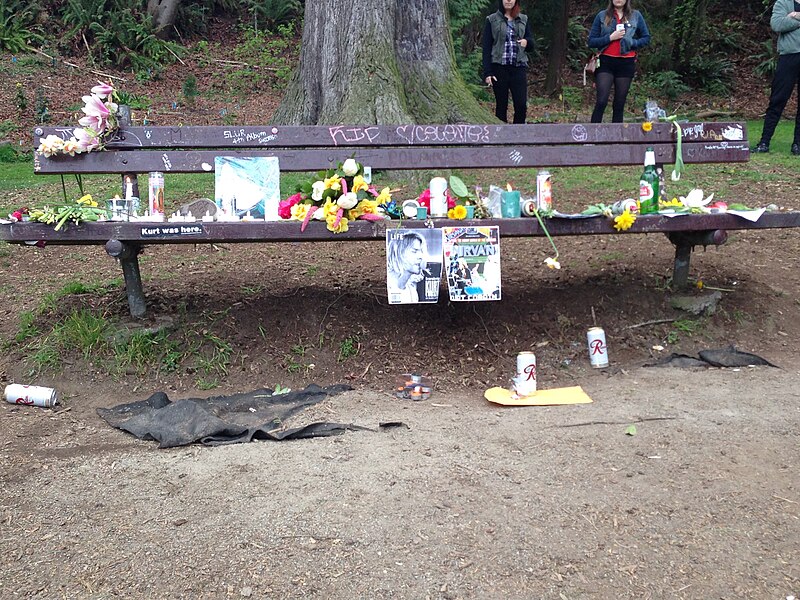
Next up, enjoy a bite to eat with some craft beer over at the Pine Box (1600 Melrose Ave). Located inside the former E.R. Butterworth & Sons Family Funeral Business building (the same funeral home that handled the services of Bruce Lee), the bar restaurant has preserved the building’s original vaulted ceilings and leaded glass windows. You can even find reclaimed oak from coffin cabinets used throughout the bar interior as well as many references to the building’s original inhabitants. This unique spot was also featured on a previous ASD blog post that spotlighted renovated funeral home buildings.
No trip to the Emerald city is complete without exploring its buried past at the Seattle Underground tour. This guided walking tour will take you through the subterranean storefronts and sidewalks entombed beneath the city. Dating back to the great fire of 1889, the passageways beneath the city were created as a result of the citizens deciding after the fire to add retaining walls on either side of the old streets due to previous issues with flooding. The preservation of these subterranean spaces provides an opportunity to reflect on the ways in which the past is interred beneath the present, mirroring the very essence of a funeral director’s work—honoring the past while serving the needs of the living.
On the road from Seattle to Portland, there are two sites worth visiting that won’t will allow you to take a break from the car without adding much driving time. First up, the Lewis County Historical Museum (599 NW Front St, Chehalis, WA) explores the rich history of the area, with exhibits ranging from Native American artifacts to pioneer life, offering a glimpse into the region’s past. Next up, after a short 40-minute drive you’ll come to the road that takes you to Mt. St Helen’s Visitor Center (3029 Spirit Lake Hwy, Castle Rock, WA) on the western shore of Silver Lake. Inside you will find, a wealth of information about the 1980 eruption, including interactive exhibits, detailed displays on the area’s geology, and firsthand accounts from survivors. Outside, you can enjoy stretching your legs on a mile-long trail through the marshy plains surrounding Silver Lake where you can enjoy birdwatching and a picture-perfect view of the volcano.

After leaving Washington, continue south to Portland where can you take in the city’s unique and eccentric atmosphere. Numerous oddities shops, macabre themed destinations and strange collection museums offer a fascinating glimpse into the unusual, making it a must-visit destination for those with a taste for the unconventional. First up, check out the “curious treasures” at Paxton Gate (811 NW 23rd Ave) where you can purchase everything from a human skull to a fossilized mammoth bone. Next, check out the Freakybuttrue Peculiarium and Museum (2234 NW Thurman), a truly unconventional museum featuring deeply unsettling exhibits like a simulation of being buried alive. This one is only for those who aren’t afraid to confront their deepest fears.
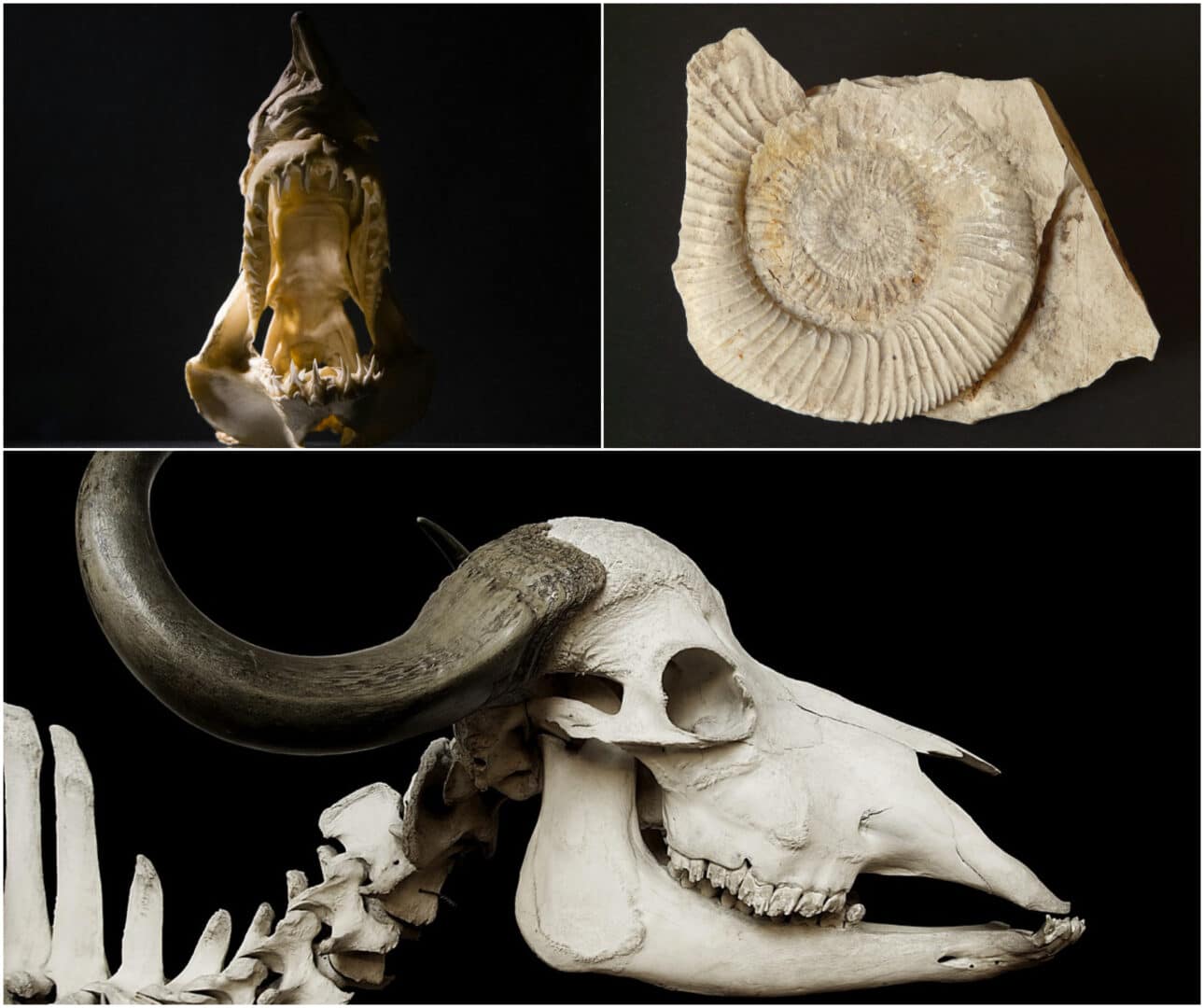
Continue your “Keep Portland Weird” tour by visiting The Skeleton Key Odditorium (939 SW 10th Ave), an intriguingly eccentric museum that’s more likely to fascinate than frighten. Dive into educational exhibits that delve into the macabre, explore local legends, and uncover the paranormal. Highlights include a Victorian Mourning History display and a collection of Ouija boards. Finally, if you feel like you need a drink after all that weirdness and you can still take a little more, grab a cold one at Creepy’s (627 SE Morrison St) which features a collection of unsettling décor including clown downs and taxidermied animals. Bottoms up!
Before leaving Portland, take some time to visit the famous Lone Fir Cemetery (649 SE 26th Ave), one of the city’s historical pioneers burial grounds as well as its second-largest arboretum. Steeped in eerie beauty, the cemetery is considered a must-visit destination for history buffs and tree-enthusiasts alike. Some sites worth visiting include the striking Macleay Mausoleum, the moving Soldiers Monument in the center of the cemetery, the unique Scrabble lover grave, the Pioneer Rose Garden featuring roses documented to have come across the Oregon trail with pioneers, and the 200-year-old Douglas Fir tree which gave the cemetery it’s name.
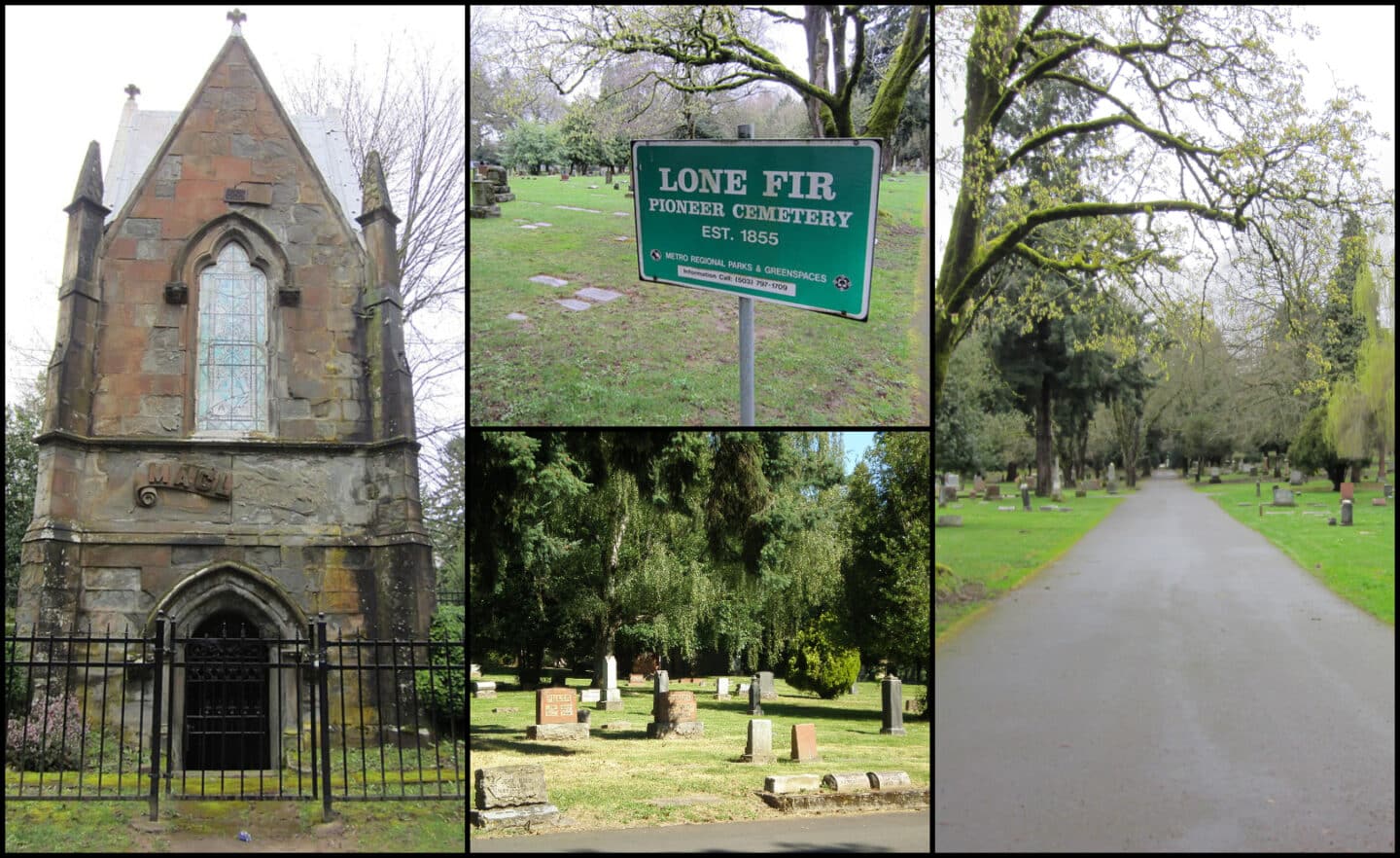
After your visit to Portland, head east toward Boise, enjoying the scenic beauty of the Columbia River Gorge area along the drive, especially surrounding the Dalles area. This area boasts the largest concentration of high waterfalls in North America. Continue east until you arrive in Baker City, OR where you will find the National Historic Oregon Trail Interpretive Center (22267 OR-86). Here you can walk in the footsteps of American pioneers, hear their stories, and experience what life was like for these resilient settlers and explorers. On the grounds of the site are four miles of interpretive hiking trails, a wagon encampment for living history reenactments, and stunning views of the surrounding area. Oregon Trail ruts are also visible.
Idaho
Begin your adventures in Idaho in Boise, a city rich with history and charm. Start your journey at the serene Pioneer Cemetery (460 E Warm Springs Ave), where you can pay your respects to some of Boise’s earliest settlers and reflect on the area’s storied past. Just a short drive away, explore the Old Idaho Penitentiary site (Old Penitentiary Rd), an intriguing historic prison that offers a glimpse into the rough-and-tumble days of the Old West.
Just outside of Boise, you’ll find the incomparable Idaho City. They say places can become like characters in the stories they tell, and Idaho City is no exception—a town where the past feels alive. For funeral directors, it’s a captivating destination, half ghost town, half living relic from the gold rush days, offering a unique connection to the history of the American West. Exploring Idaho City’s historic cemeteries and the enduring legacies of its past residents makes for an unforgettable visit, where every corner whispers tales of life and death. You can also check out the Boise Basin Museum (Boise Basin Museum, 501 Montgomery St, Idaho City) to delve deeper into the region’s gold rush history and learn about the miners who shaped the fate of this rugged land.
After you have mined all that rich gold rush era history, head northeast through Boise National Forest to Ketchum Cemetery (1026 North Main Street, Sun Valley) to visit the final resting place of Ernest Hemingway. Many are often surprised to learn the prolific writer whose legendary travels inspired many a story is buried in a simple slab grave located in this quiet area of central Idaho. Hemingway’s ties to the Gem state date back to his first visit in 1939. Over the years, he spent many autumns hunting and fishing in the state’s vast wilderness and later purchased a house on the edge of Ketchem woods. In his later years, he lived in near seclusion, seldom venturing from his home. After his tragic suicide, he was laid to rest with little fanfare with a simple headstone that reflected his stoic nature. Despite the remote location, his grave along with the Ernest Hemingway Memorial (Memorial Park, Sun Valley Rd, Sun Valley) located along a picturesque creekside trail in Memorial Park, Sun Valley, draw numerous visitors to the town each year.
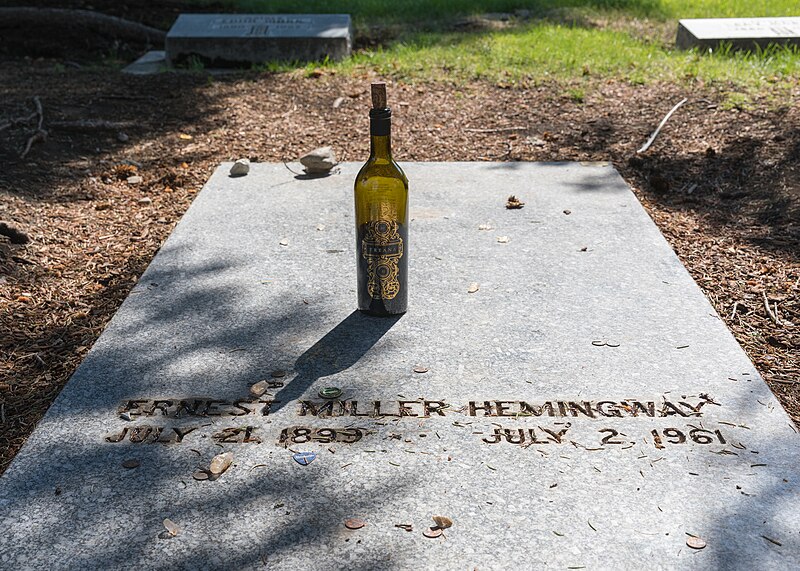
Continue east along Route 26 until you reach the turn off for Craters of the Moon National Monument. This unique geological site with its otherworldly landscapes will make you feel as though you have ventured onto the set of a science fiction film. To avoid getting lost, be sure to use the Robert Limbert Visitor Center address on your GPS (1266 Craters Loop Road). From here, you can take the Loop road to explore the vast lava fields, volcanic craters, and caves that stretch across the park. Craters of the Moon is a must-stop for our funeral director’s road trip due to its deep connection with the cycle of life and death symbolized by the ever-changing and dramatic landscape.
On your way out of Idaho and into Wyoming, you’ll drive through the town of Idaho Falls, the perfect pitstop for saying goodbye to this magnificent state. There is plenty of fun things to do in this town, but we recommend taking a little time to peruse the unique items available at Shaddow Domain (341 W Broadway St, Idaho), another oddities shop for those with a taste for the unusual.
Wyoming
As the least populated state in the continental United States, Wyoming is renowned for its vast, open landscapes. With the exception of our first destination, all of our stops in Wyoming highlight unique geological formations. What makes these sites particularly fascinating is the thought of early pioneers traversing the state, using these distinctive landforms as navigational markers on their arduous journey. Many of these courageous explorers never completed their trek, their final resting places marked by unmarked graves scattered in the remote corners of the region. If any state is home to ghosts, it is Wyoming. For funeral directors, this state is an essential destination for your road trip.

First up, head to Fort Washakie to visit Sacajawea Cemetery in the Wind River Indian Reservation. Please be advised, this area is very remote with very few landmarks. This is traditionally believed to be the final resting place of the renowned Shoshone interpreter who helped guide Lewis and Clark across the United States. The gravesite is in a remote region in a small, beautiful cemetery on an unmarked road. While there is some debate among historians over whether this is indeed the gravesite of Sacajawea due to conflicting versions of her life story after the expedition, most support the idea that her grave is indeed in Wyoming as it was the belief of her people.
From Fort Washakie, travel 22 miles southeast to visit The Sinks (3079 Sinks Canyon Rd, Landers), an incredible canyon with a distinctive feature that once baffled geologists for years. The river vanishes underneath a canyon and does not remerge for several hours, making it a truly unique place. Next up, a series of awe-inspiring pioneer landmarks that will make history come alive in front of your eyes. There’s Devil’s Gate in Alcova, a dramatic rock formation where the Sweetwater River cuts through a narrow gorge, a crucial landmark for pioneers on the Oregon Trail.
Then, head to Independence Rock near Casper, often called the “Register of the Desert” due to the hundreds of names carved into its granite surface by travelers passing through. You can also check out the Rockpile Museum in Gillette, where you can explore the rich heritage of the area through fascinating exhibits on local history, paleontology, and the Old West. Finally, before you leave the state, take in the dramatic views of The Devil’s Tower, the first site to be named a National Monument in the United States. Each stop offers a unique glimpse into the rugged and adventurous spirit of Wyoming’s past.
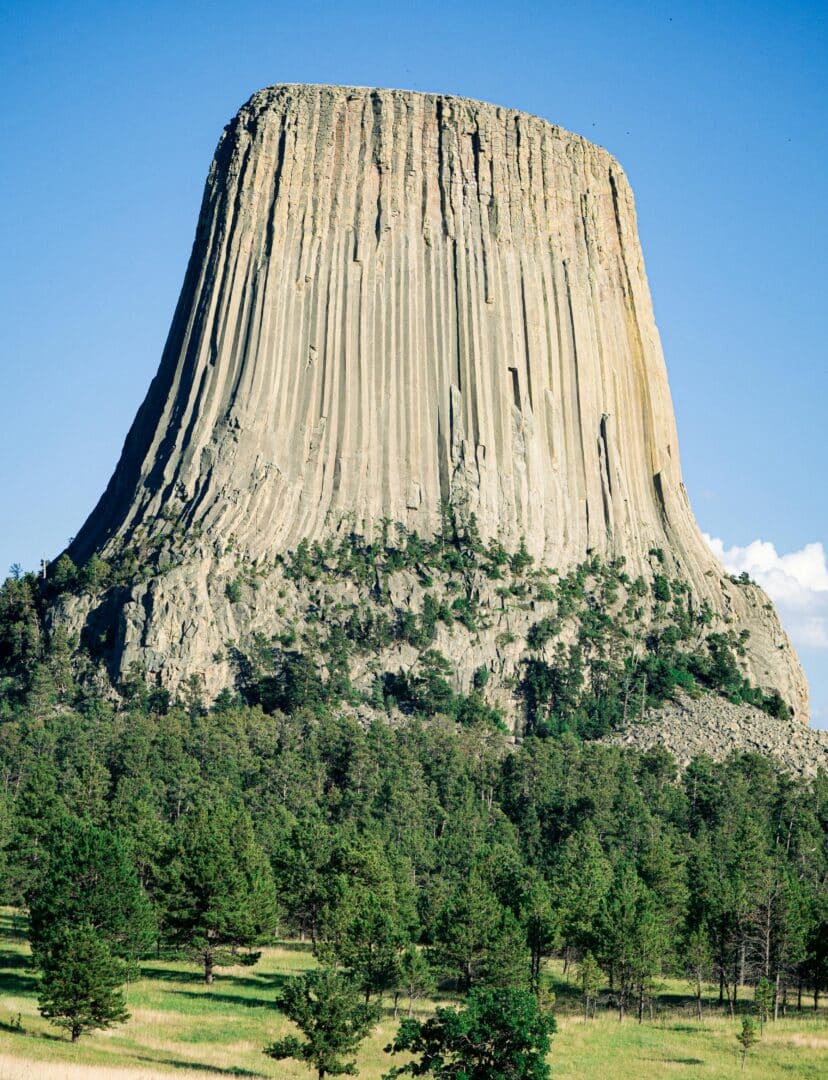
South Dakota and Minnesota
South Dakota
If you ever watched the HBO TV show Deadwood, you already know that the Black Hills of South Dakota is an area steeped in rich history and filled with fascinating characters (and if you haven’t, please, stop reading this blog right now and go stream every episode immediately!. The town of Deadwood itself is like stepping back in time. Walking through its streets, you’ll find historic saloons, museums, and restored buildings that tell the story of this once lawless mining town. The entire town is a National Historic Landmark, preserving the legacy of the Gold Rush era.
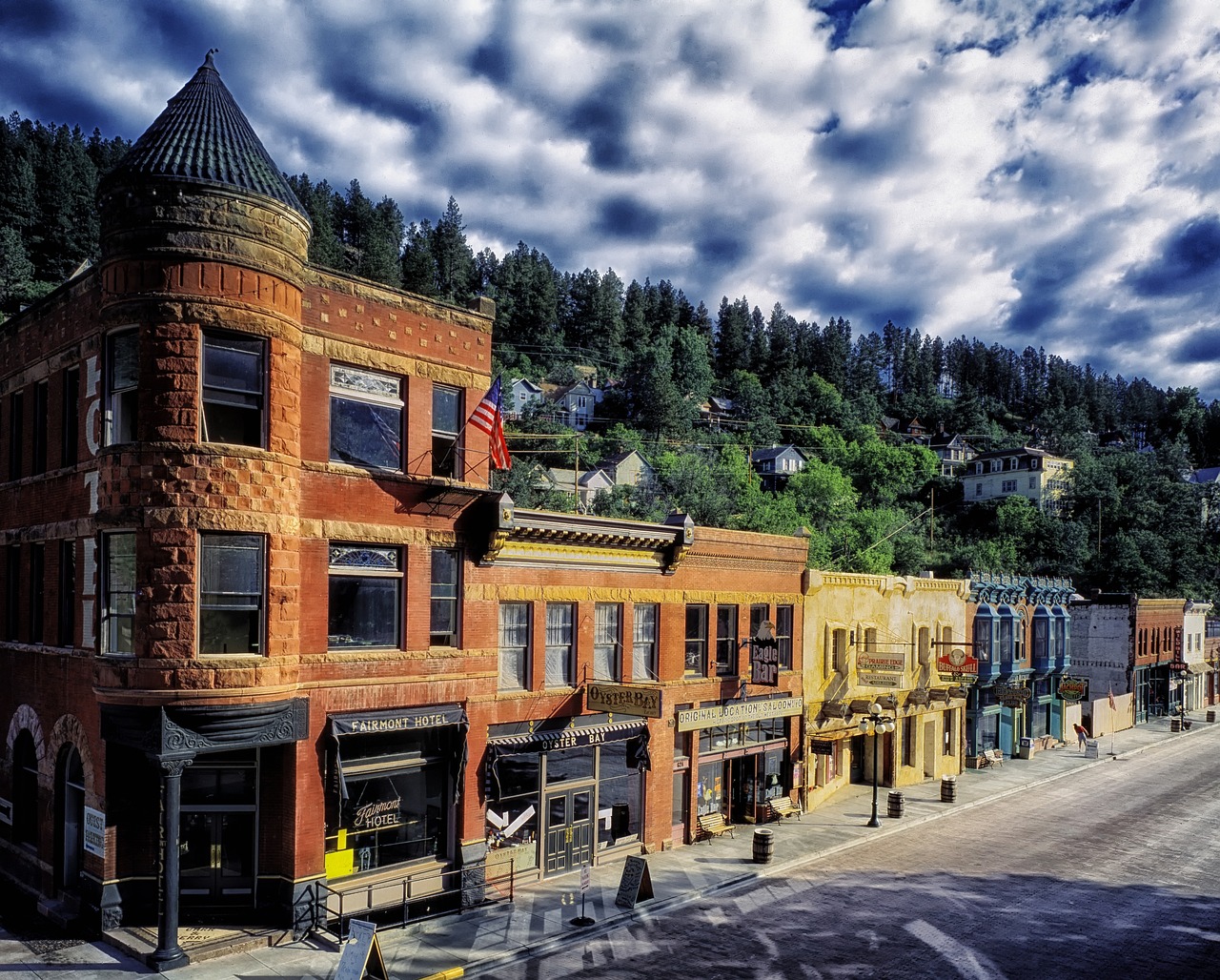
A must-visit is Mt. Moriah Cemetery (10 Mt Moriah Dr), also known as “Boot Hill.” This iconic cemetery is the final resting place of some of the Wild West’s most legendary figures, including Wild Bill Hickok and Calamity Jane. The cemetery offers not just a glimpse into the past but also stunning views of the town below and the surrounding Black Hills. As you walk among the graves, you’ll find yourself immersed in the stories of those who lived (and died) in the frontier days.
From Deadwood, travel 75 miles south to Hill City, the perfect starting base for your adventures in this region. While most people come to this area of South Dakota for its awe-inspiring monuments (see below), as a funeral director you are likely to also find the Museum at Blacks Hills Institute (117 Main St, Hill City) to be a worthy stop. Here you can find an impressive collection of fossils, rocks, minerals and meteorites, including the largest compilation Tyrannosaurus rex. Many of the displays are also directly accessible (yes, you can touch real dinosaur bones!)
After hanging out with the dinosaurs, a visit to the iconic Crazy Horse Memorial is a must for any funeral director with a passion for history and monumental art. This colossal mountain carving, still in progress, honors the legendary Lakota leader Crazy Horse and stands as a powerful symbol of Native American culture and resilience. The on-site museum offers a deep dive into the heritage and stories of the Great Plains tribes.
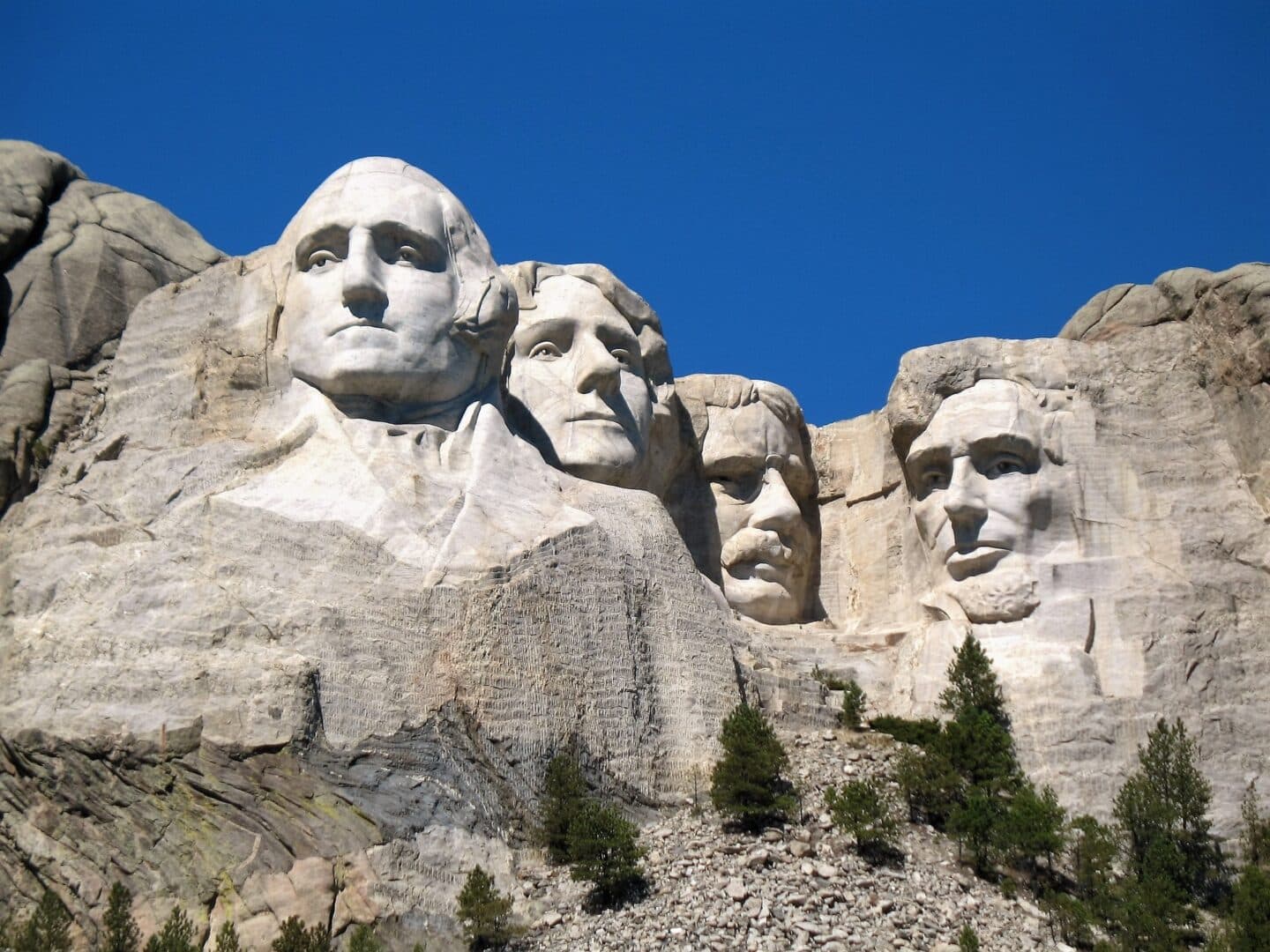
Just a short drive away, the awe-inspiring Mount Rushmore awaits, where the carved faces of four U.S. Presidents—Washington, Jefferson, Roosevelt, and Lincoln—gaze out over the Black Hills. While Crazy Horse reflects the spirit and resistance of the indigenous people, Mount Rushmore represents the nation’s evolution and leadership. Together, these monumental works offer a profound experience, connecting visitors to the complex history and cultural narratives that shaped America.
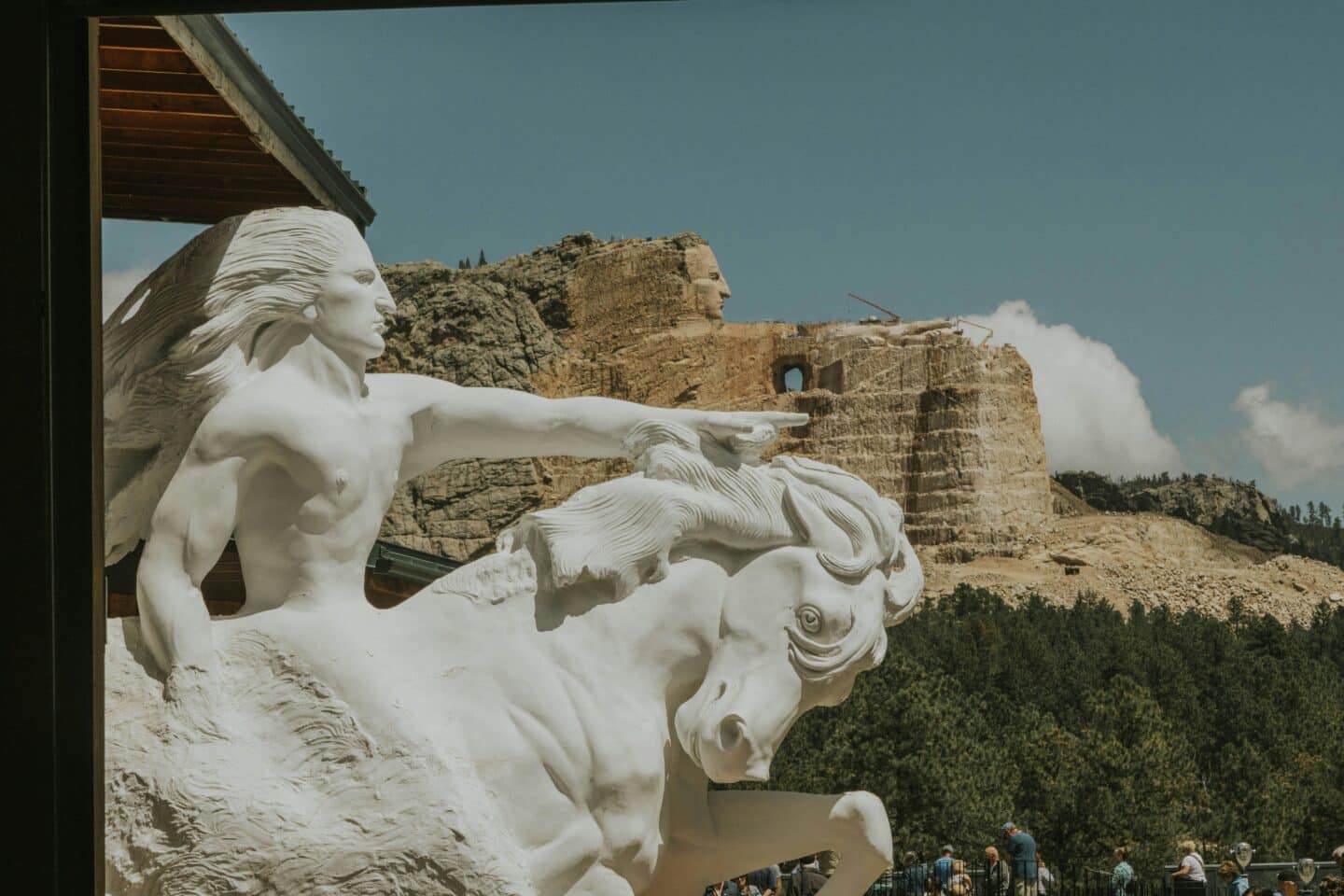
After taking in these iconic sites, you can choose to hit the road for a long stretch or spend some time first in Rapid City where you can visit some storied locations such as Hotel Alex Johnson (523 6th St), considered by paranormal investigators to be one of the most haunted hotels in America. This historic hotel, which has hosted presidents and celebrities, is filled with tales of ghostly encounters, making it an intriguing stop for those interested in the supernatural. You might also explore the Journey Museum and Learning Center (222 New York St), which offers a comprehensive look at the history of the Black Hills, from the time of the dinosaurs to the present day, with special emphasis on Native American cultures and the region’s geological history.
Next up, head east taking in the rugged beauty of Badlands National Park until you reach the Chamberlain rest area facility. Here you can find the awe-inspiring Dignity of Earth and Sky statue. This incredible monument honors the culture of the Lakota and Dakota people and features a 50-ft high stainless-steel representation of an Indigenous woman receiving a star quilt. Continue west until you reach Porter Sculpture Park (45160 257th St, Montrose). This junk art roadside attraction includes more than 60 metal sculptures spread across 10 acres.
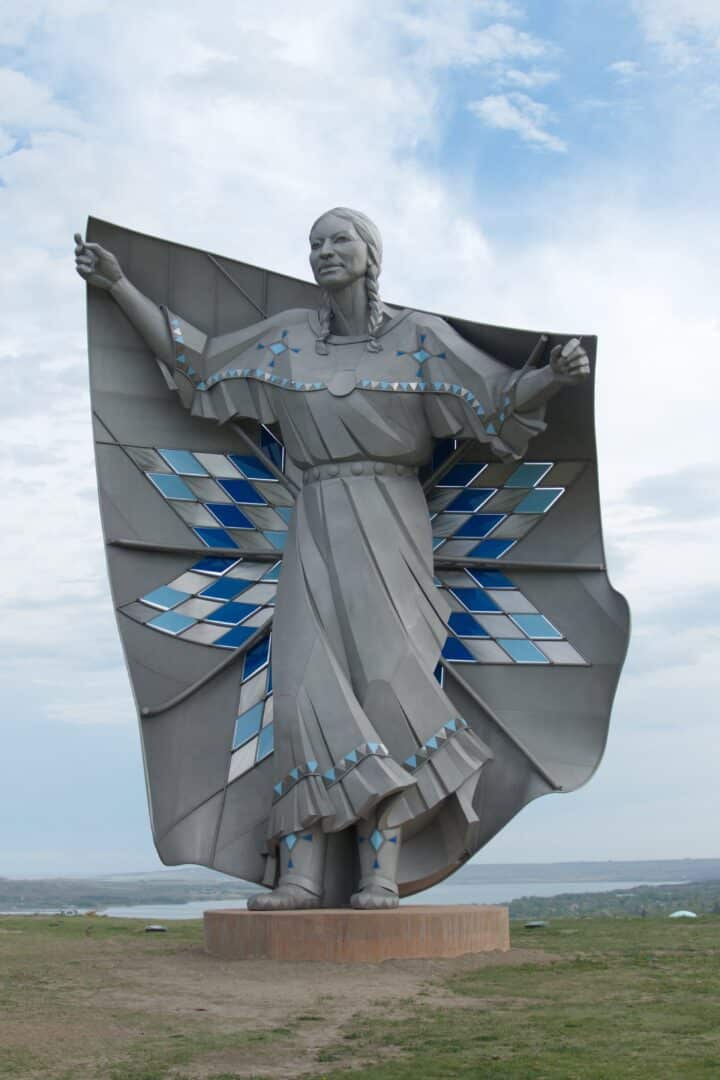
Continue east until you reach Sioux Falls, South Dakota’s largest city. Famous for it’s raging waterfalls, the city offers a wide array of activities. Right outside the city, you can visit the 1880s Cowboy Town (46614 SD-38, Buffalo Ridge). Like a real-life Westworld, the “town” is actually an automated Wild West rendering populated solely by robots. Next, visit a 1,600-year-old cemetery at Sherman Park (Sherman Park Rd) where Woodland Natives were buried in five ancient burial mounds. After you’ve enjoyed all this great city has to offer, southeast to visit Good Earth State Park at Blood Run (26924 480th Ave), one of the oldest sites of long-term human habitation in the United States.
Minnesota
The final section of Part 3 of our Funeral Director’s Road Trip explores the Land of 10,000 lakes. Traveling through Minnesota offers funeral directors a unique perspective on history and heritage, blending natural beauty with poignant reminders of those who came before us. One such stop is Pipestone National Monument (36 Reservation Ave, Pipestone), where ancient quarries have provided the sacred red stone used by Native Americans for centuries in their ceremonial pipes. The site is steeped in tradition and reverence, qualities that resonate deeply with those in the funeral profession.
As you continue your journey, a visit to Prince’s museum and estate at Paisley Park (7801 Audubon Rd, Chanhassen) in Chanhassen offers a different but equally significant reflection on legacy. The vibrant life and music of Prince are celebrated here, making it a place of both inspiration and introspection. Just a short drive away, Lakewood Cemetery (3600 Hennepin Ave, Minneapolis) provides a peaceful contrast and serves as the final stop of this leg of the road trip. With its stunning gardens, historic chapel, and the resting places of many notable figures, Lakewood is a place where the beauty of life and the solemnity of death coexist harmoniously—a fitting conclusion to any funeral director’s road trip journey.
This completes Part 3 of our itinerary traveling from the Pacific Northwest to the Great Lakes. Be sure to check out Part 1 and Part 2 of our series. Visit our blog in the coming months to read conclusion of our funeral director’s road trip series which will explore some recommended sites to visit in central America and the mid-west. Happy travels everyone!
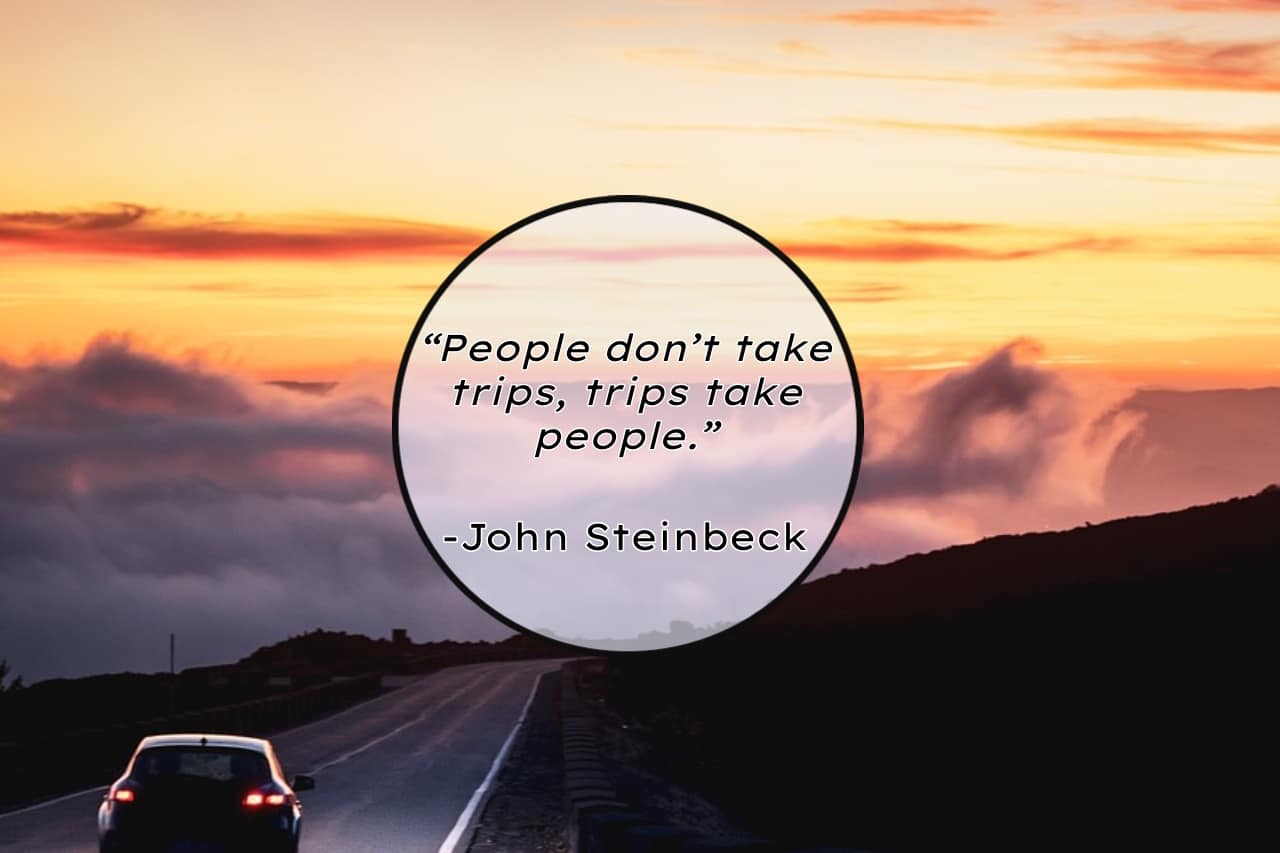
RELATED READING
11 Remarkable Graves with Incredible Back Stories
28 Mind-Blowing Atlas Obscura Stories Funeral Directors Will Love
7 Out of the Ordinary Gifts Left On Famous Gravesites
ASD is here to help when you need to get away
When you need to take a well-deserved vacation or simply step away from the office, ASD is here to ensure seamless communication for your funeral home. Our dedicated team covers your phones with empathy and professionalism, allowing you the freedom to embark on adventures while staying connected through our convenient mobile app. Rest assured, you can check in anytime, knowing that your funeral home communications are in capable hands.
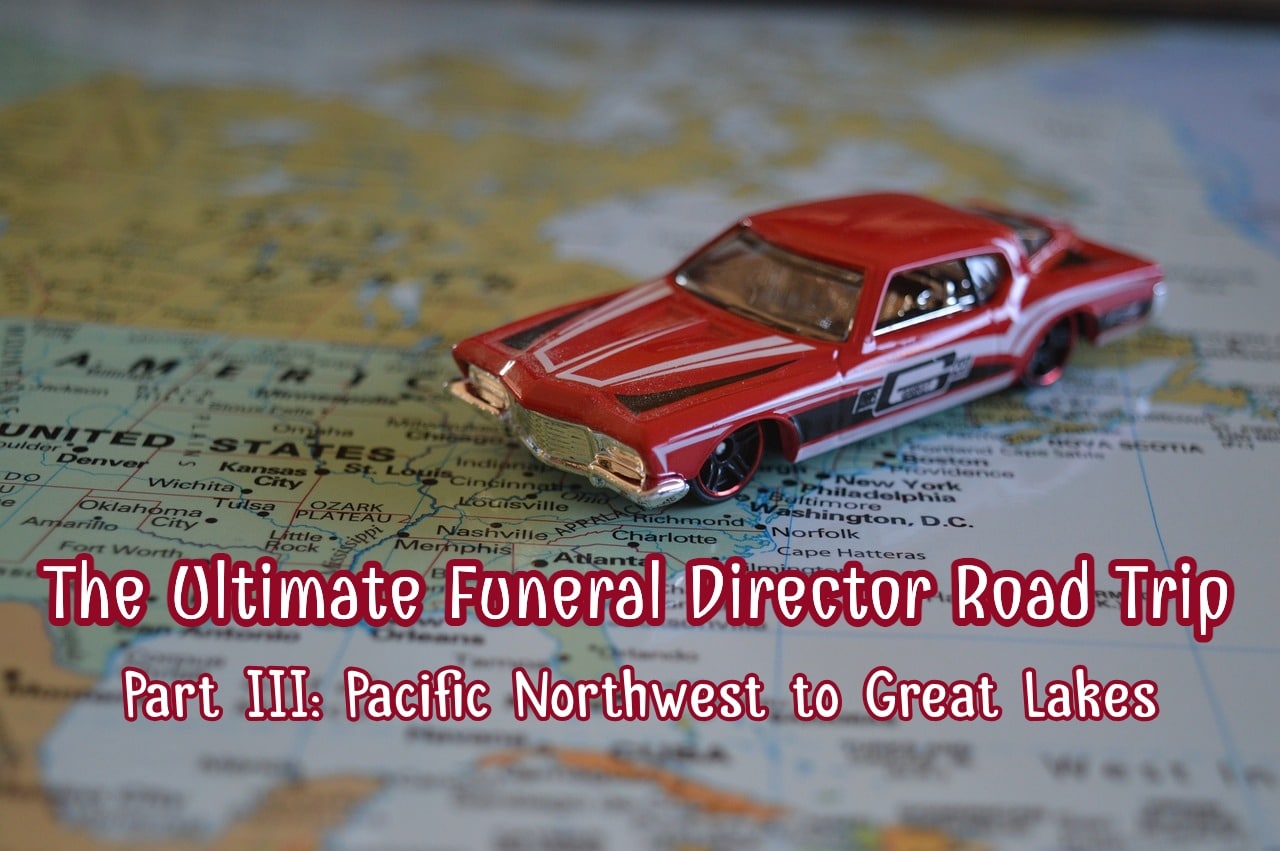

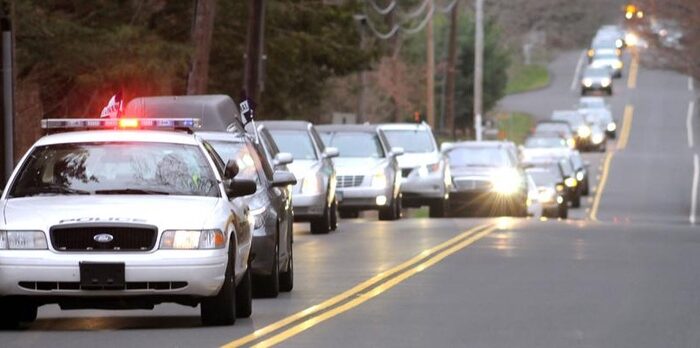
2 Responses
I just love this series so much! My daughter and I, both funeral directors, are going to take this trip next summer. So exciting!
Would it be possible to get the whole series as a PDF so we could make a binder/scrap book with our plans and then photos from the trip?
That is so awesome Mary! You just made this writer’s day! Yes I would absolutely be happy to do that for you!